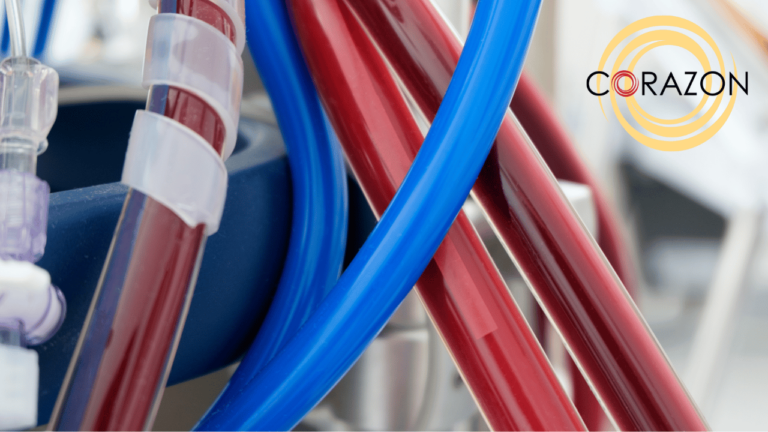
Implementing an ECMO Program: Key Considerations
What is ECMO? COVID-19 has presented healthcare with many challenges over the past two years, but an increasingly popular treatment has shown tremendous potential in saving the lives of a…
With being just days past the much-desired coming of the New Year, and the highly-anticipated roll-out of two (maybe three) COVID-19 vaccines, now is the time to decide where the path of possibilities can once again begin to lead. Our healthcare industry still has a long road ahead, but as the bumps in the road begin to smooth, we can perhaps begin to see what a return to normalcy will look like from many aspects. But even more importantly, we must collectively consider lessons learned … especially when deciding what future opportunity looks like in this new era, knowing our world has undoubtedly changed after the last 10 months.
To start this reflection on 2020 and with a hopeful look ahead for 2021, there are certain basic key elements to consider when assessing the landscape prior to starting a new journey. This is the time for taking stock, for making resolutions, setting goals, and more. You can stop and think about how the last year affected you personally (Emotionally, Physically, Financially, and Socially) as an initial step…
Emotionally, for many of the generations in our corner of the world, this is the first time that a major world event has affected day-to-day life. Most had not been through an experience that limited not only limited freedoms and choices, but was also impactful in terms of fear and isolation. Was the need for self-preservation and the overall good the guiding principle of lockdowns and economic closings? Or did the restrictions seem unnecessary and applicable only to others?
Physically, no matter your level of activity, the range of options became much more limited, constrained by space and equipment. This either meant finding new ways to bring activities to you, or deciding certain activities were just not a priority given the current state of the world.
Some were able to cling to their current source of income, and with little access to leisure activities, dinning venues, or travel options, they actually saw increases in savings. Yet, many were less fortunate and felt the tap turn-off quickly in some previously booming sectors. Further, initial support through government programs was given, only to end abruptly, with no consistent support for those working in the industries hit the hardest. The only choice was to hope for a rebound before the economic trajectory of the US was altered for possibly years to come.
In what seemed like a blink of an eye, some of our most trusted outlets for social interactions were determined to be unsafe, deemed high risk, or considered non-essential. Workplaces, schools, even churches became off limits. Suddenly these communities had to find virtual ways to communicate, to remain operational, and to adapt. There were even greater challenges compiling the plight of our elderly in care facilities and front line workers who had to isolate from their own family members in their own homes.
Considering all those factors is enough to overwhelm anyone as to the impact that the events of 2020 have had on us all. It’s easy to think about life “before” the pandemic, or even “during” with the many changes we’ve had to adopt. Now I challenge you to go back through these areas and substitute your own personal experience with that of our healthcare industry, our hospital institutions, our front-line workers … how has your professional life as a member of the healthcare community been affected?
Was your organization able to adjust well to restrictions that were put in place? Did the hospital stay nimble enough to flex to the ongoing and changing demands of COVID units and elective case deferment? Did leadership keep initiatives moving forward while remaining lean enough to stay profitable and maintain appropriate staffing levels and services? Did teams adapt to communicating internally and with the community while serving patients using new or repurposed technologies?
Indeed, in all these many ways, the healthcare industry was forced to evaluate clinical, operational, and financial scenarios almost daily, and then adapt to the needs of the community and internal stakeholders. All while also itself being a critical player in the COVID-19 story.
What do all of these changes mean as we march forward? How can you be better prepared for what 2021 holds? We hope healthcare never again becomes hindered by so great a lack of preparedness, which is why Corazon has worked throughout the pandemic to help clients with both short- and long-term needs. When it comes to rebounding from the COVID-19 impact, becoming better prepared for the future, or working to further utilize the technology gains forced upon many facilities, Corazon can help. As the worst of the pandemic is slowly moving behind us, it is finally time to consider what needs to happen now, in the “after” phase, so that 2021 is a better year in many ways.
We first recommend reviewing your organization’s 2020 Strategic Plan to ensure any worthwhile efforts, projects, plans, and so on were addressed. If not, consider revisiting that effort for 2021. Next, a thorough review of the current 2021 Strategic Plan is also critical. Depending on when it was finalized, reviewing the strategies and tactics included is a valuable exercise, as many things may have changed.
Many of our most successful clients continue to plan for the future, despite the need to actively give attention to the day to day events shaping the changing landscape. Hospitals with a solid plan AND a flexible approach are best able to seize opportunities and surpass the competition.
That’s what we call planning for success.